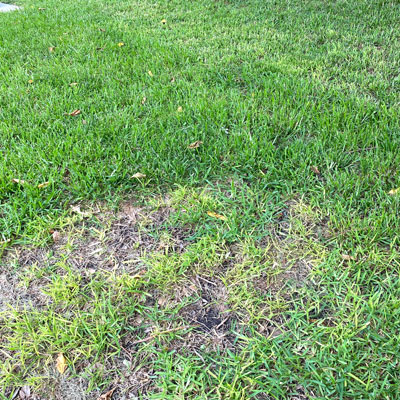Gray Leaf Spot Abounds

I had never seen gray leaf spot in St. Augustine until it hit my own lawn somewhere in the early 1990s.
The grass turned decidedly yellowish, so, out of force of habit, I applied nitrogen. The problem became worse in a hurry. I called my lifelong friend Dr. James McAfee, Extension turf specialist with Texas A&M. Jim’s first question when I described the yellow grass was, “When did you last fertilize it?”
That was when I learned that nitrogen in the summer exacerbates the gray leaf spot fungus. In times of prolonged wet weather, the problem can get out of hand in a hurry.
What I’m seeing right now…
Conditions are ripe for gray leaf spot in St. Augustine and zoysia lawns right now. If you are seeing yellowed turf in irregular patches, look more closely at the blades and runners.

In addition to the yellow blades, the real telltale symptoms will be diamond-shaped, gray-brown lesions on the leaf blades and even on the runners. Given a little bit of time the infections will cause the blades and runners to become malformed and to thin out and die.
What to do if you can see gray leaf spot in your lawn…
If you see gray leaf spot and are pretty sure that you have identified it correctly, there are three or four steps you can take that will help you deal with it in quick order.
• Discontinue all applications of nitrogen until early September. That goes for zoysia and St. Augustine, and it pretty much holds between June 15 and the first week or two of September for most of Texas. But do note: this does not apply to bermudagrass turf, and it only applies to St. Augustine and zoysia that are infected with gray leaf spot.
• Water only in early morning. Do not let the grass go into the night in a wet condition if at all possible.
• Apply a turf fungicide labeled for control of fungal leaf spots. Several Land Grant universities (“ag schools”) recommend Azoxystrobin and Daconil as having such labels.
Note: Gray leaf spot damage shows up concurrently with chinch bugs, but you can tell them apart:
Gray leaf spot:
Sun or shade
Lesions visible
Grass turns yellow
No insects visible
Chinch bugs:
Hot, sunny areas
No lesions on blades
Grass turns brown
Chinch bugs visible
